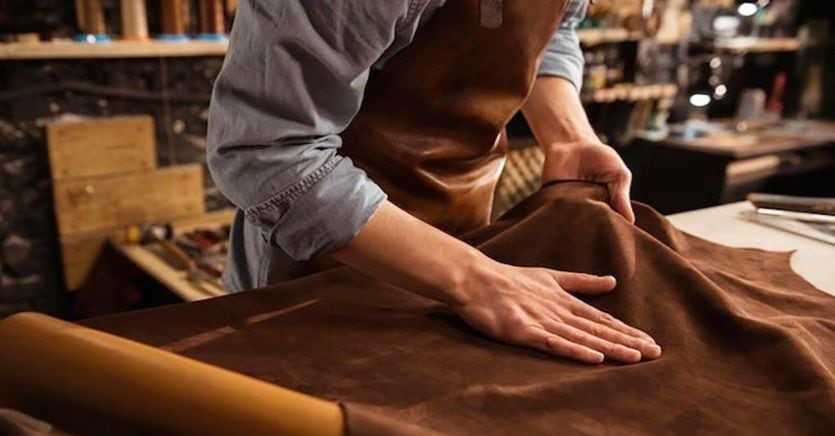The tanning industry is implementing actions devoted to the circular economy. Some of which have ancient origins. The first step is clear and simple: the leather is a by product which derives directly from the food industry and which, if not recovered, would create an important disposal problem. «The sector is a historical example of circular economy – notes Sara Santori, CEO of Conceria Nuvolari -. In recent years, important steps have been taken by paying attention to the entire production process and the components used, reducing their impacts ». And finding ways to make the most of any waste that comes out of Italian tanneries.
Italia leader in Europa
Research and collaboration with universities, new technologies and industrialization should thus be able to ensure a long life for the sector. According to the report by Unic-Italian tanneries, Italy is the leading European producer of finished leathers, with a value equal to 63% of the sector’s turnover on a continental level and 23% of the world value. After working with the Polytechnic of Milan, the Nuvolari tannery has come to calculate the life cycle assessment of its products which are also metal free, biodegradable, compostable. “Traditionally tanned leather already has an important durability – adds Santori -, but by applying graphene to the leather we were able to make it ten times more resistant to scratches, stresses as well as making it 99.99% antibacterial, increasing its duration and, therefore, reducing its environmental impact “.
A consortium for “green” tanning
But Italy has another tradition to mention, that linked to vegetable tanning. The process is told by Leonardo Volpi, president of the consortium of the same name: “The active ingredient that allows vegetable tanning is a vegetable extract, the tannin that during tanning penetrates the fibers, binds to the proteins of the skin and makes it stable and lasting “. Here the circular economy weighs several times: in addition to raw cowhide, a waste from the European meat industry, we work with chestnut, quebracho and mimosa tannins that come from certified Pefc-Chain of Custody suppliers. “The production process is made up of many steps that can be briefly divided into three macro-phases: the preparation for tanning or riviera, in which the skins are purified of the conservation salt, the hair, the grease and various impurities and prepared to receive the tanning agent; the tanning, retanning, dyeing and fatliquoring phase, qualifying the process that gives the characteristics to the final product, in which the hides are immersed in large rotating barrels containing water and tannins, then possibly colored and, finally, treated with animal and vegetable fats to recover softness; the finishing phase, a series of chemical-mechanical interventions to give the final appearance to the product ».
The reuse of water
The tanneries that are part of the vegetable leather consortium (about twenty) are connected to the consortium purifier, to which they send their waste water for purification treatments, before being reintroduced into the Arno river. The resulting sludge can be used to produce fertilizers for agriculture. The preservation salt is also recovered which can become road antifreeze, the fleshings and the split tripe which become hydrolyzed proteins and amino acids for soil improvers and agricultural biostimulants. Other waste, such as shaving, trimmings, waste, can be pulverized and reused to produce regenerated leather. And the circle becomes truly virtuous.
